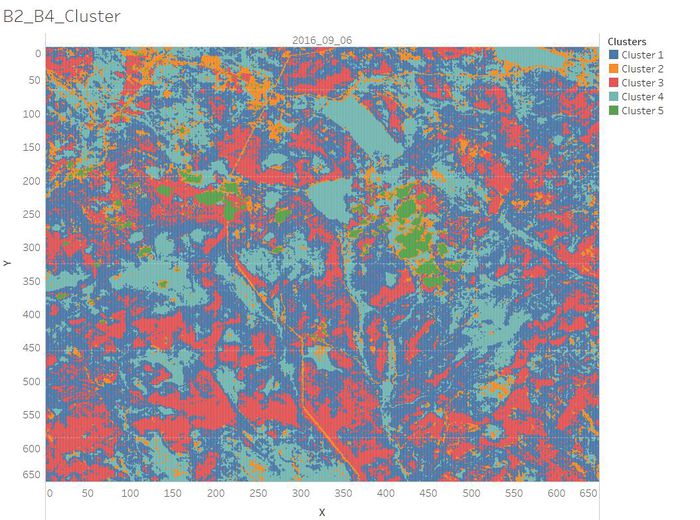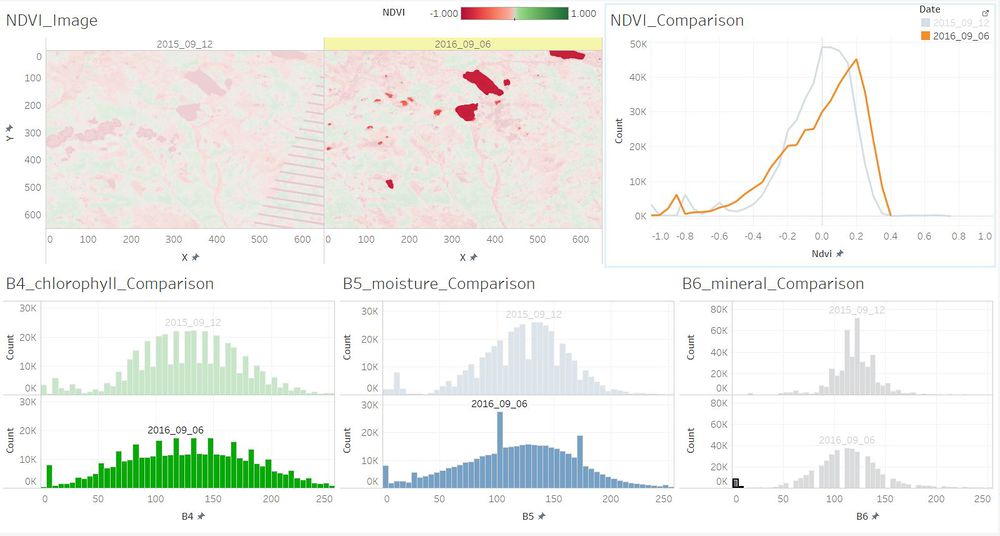Difference between revisions of "Mandi Assignment Final Answer"
| (22 intermediate revisions by 4 users not shown) | |||
| Line 4: | Line 4: | ||
{|style="background-color:#1B338F;" width="100%" cellspacing="0" cellpadding="0" valign="top" border="0" | | {|style="background-color:#1B338F;" width="100%" cellspacing="0" cellpadding="0" valign="top" border="0" | | ||
| − | | style="font-size:100%; solid #000000; background:#2B3856; text-align:center;" width=" | + | | style="font-size:100%; solid #000000; background:#2B3856; text-align:center;" width="16.6%" | |
| − | [[ | + | [[ISSS608_2016-17_T3_Assign_LUO_MANDI| <font color="#FFFFFF">Introduction</font>]] |
| − | | style="font-size:100%; solid #1B338F; background:#2B3856; text-align:center;" width=" | + | | style="font-size:100%; solid #1B338F; background:#2B3856; text-align:center;" width="16.6%" | |
[[Mandi_Assignment_Data_Preparation| <font color="#FFFFFF">Data Preparation</font>]] | [[Mandi_Assignment_Data_Preparation| <font color="#FFFFFF">Data Preparation</font>]] | ||
| − | | style="font-size:100%; solid #1B338F; background:#2B3856; text-align:center;" width=" | + | | style="font-size:100%; solid #1B338F; background:#2B3856; text-align:center;" width="16.6%" | |
| − | [[Mandi_Assignment_Analysis_Procedure| <font color="#FFFFFF"> | + | [[Mandi_Assignment_Analysis_Procedure| <font color="#FFFFFF">Data Exploration</font>]] |
| − | | style="font-size:100%; solid #1B338F; background:#2B3856; text-align:center;" width=" | + | | style="font-size:100%; solid #1B338F; background:#2B3856; text-align:center;" width="16.6%" | |
[[Mandi_Assignment_Final_Answer| <font color="#FFFFFF">Final Answer</font>]] | [[Mandi_Assignment_Final_Answer| <font color="#FFFFFF">Final Answer</font>]] | ||
| + | | style="font-size:100%; solid #1B338F; background:#2B3856; text-align:center;" width="16.6%" | | ||
| + | [[Mandi_Assignment_Visualization| <font color="#FFFFFF">Visualization Result</font>]] | ||
| + | |||
| + | | style="font-size:100%; solid #1B338F; background:#2B3856; text-align:center;" width="16.6%" | | ||
| + | [[Mandi_Assignment_Comments| <font color="#FFFFFF">Comments</font>]] | ||
|} | |} | ||
<br/> | <br/> | ||
| − | + | =Questions & Answers= | |
| − | + | ==Q1. The scale and orientation of the supplied satellite images.== | |
Identified the location and coordinates of the Boonsong Lake in the satellite image as below: <br /> | Identified the location and coordinates of the Boonsong Lake in the satellite image as below: <br /> | ||
The orientation of the satellite image is the same with that of the Boonsong Lake. <br /> | The orientation of the satellite image is the same with that of the Boonsong Lake. <br /> | ||
| Line 27: | Line 32: | ||
Hence, the length of a pixel is 3000/(504 - 475+1) ft, equals to 100 ft. Then the area of one pixel is 100 * 100 = 10000 square ft. <br /> | Hence, the length of a pixel is 3000/(504 - 475+1) ft, equals to 100 ft. Then the area of one pixel is 100 * 100 = 10000 square ft. <br /> | ||
As the satellite image has 651*651 pixels, the actual scale of the region is 651*651*10000 square ft = 4,238,010,000 square ft. <br/> | As the satellite image has 651*651 pixels, the actual scale of the region is 651*651*10000 square ft = 4,238,010,000 square ft. <br/> | ||
| − | The orientation of the satellite image is oriented north-south.< | + | The orientation of the satellite image is oriented north-south.<ref>https://wiki.smu.edu.sg/1617t3isss608g1/ISSS608_2016-17_T3_Assign_TEN_KAO_YUAN_MC3</ref> |
| − | + | ==Q2. Features in the Preserve area as captured in the imagery.== | |
Most of the images have sensor artifacts at the bottom right corner. | Most of the images have sensor artifacts at the bottom right corner. | ||
To identify the features in the Preserve Area, I picked the image which is generated from the data [image11_2016_09_06.csv]. It has no sensor artifacts at all. | To identify the features in the Preserve Area, I picked the image which is generated from the data [image11_2016_09_06.csv]. It has no sensor artifacts at all. | ||
| Line 35: | Line 40: | ||
<tr> | <tr> | ||
<td width=60% align='center'>[[File:2016 09 06 Changes PlantHealth.jpeg|600px]]<br /></td> | <td width=60% align='center'>[[File:2016 09 06 Changes PlantHealth.jpeg|600px]]<br /></td> | ||
| − | <td align='justify'>Band combinations(B4, B3, B2) are mapped to the RGB image channels to create the false-color image | + | <td align='justify'>Band combinations(B4, B3, B2) are mapped to the RGB image channels to create the false-color image. <br/> The color of the waterbody is from dark blue to black. Red region stands for vegetation. <br/> Besides, we can recognize the clouds and roads by vision. <br /></td> |
</tr> | </tr> | ||
<tr> | <tr> | ||
<tr> | <tr> | ||
<td width=60% align='center'> [[File:2016 09 06 Floods newLands.jpeg|650px|600px]]<br /></td> | <td width=60% align='center'> [[File:2016 09 06 Floods newLands.jpeg|650px|600px]]<br /></td> | ||
| − | <td align='justify'>Band combinations(B5, B4, B2) are mapped to the RGB image channels to create the false-color image | + | <td align='justify'>Band combinations(B5, B4, B2) are mapped to the RGB image channels to create the false-color image. <br/> The red region represents new lands.<br /></td> |
</tr> | </tr> | ||
<tr> | <tr> | ||
| − | <td width=60% align='center'> [[File:NDVI | + | <td width=60% align='center'> [[File:NDVI RVI.jpg|1000px]]<br /></td> |
<td align='justify'> | <td align='justify'> | ||
| − | With the NDVI and RVI Value, we can identify the different vegetation. <br /> | + | With the NDVI and RVI Value, we can identify the different vegetation.<br/> The darker the green, the higher chlorophyll content the plant has.<br /> |
</td> | </td> | ||
</tr> | </tr> | ||
| Line 51: | Line 56: | ||
<td width=60% align='center'>[[File:B2 B4 Cluster.jpg|700px]]</td> | <td width=60% align='center'>[[File:B2 B4 Cluster.jpg|700px]]</td> | ||
<td align='justify'> | <td align='justify'> | ||
| + | As Band 2 shows different types of plants and general visible brightness and Band 4 is sensitive to vegetation structure and chlorophyll, we can perform clustering on the data by the value of Band 2 and Band 4. <br/> Based on the previous analysis of the images, we summarized the clustering results as below. <br/> | ||
* Cluster 1: Common vegetation with lower chlorophyll content. | * Cluster 1: Common vegetation with lower chlorophyll content. | ||
* Cluster 2: Road/Newly Land/Soil. | * Cluster 2: Road/Newly Land/Soil. | ||
| Line 62: | Line 68: | ||
<br /> | <br /> | ||
| − | + | ==Q3. Features that change over time in these images.== | |
| + | In general, the waterbody became more pure from 2014 to 2016. The plants which are with higher chlorophyll content became less from 2014 to 2016. <br/> | ||
| + | The visualization analysis results are as below. <br/> | ||
<table width=100% border=1><tr bgcolor=#81D4FA><th>'''Visualizations'''</th><th>'''Interpretations'''</th></tr> | <table width=100% border=1><tr bgcolor=#81D4FA><th>'''Visualizations'''</th><th>'''Interpretations'''</th></tr> | ||
<tr> | <tr> | ||
| Line 79: | Line 87: | ||
<tr> | <tr> | ||
<td width=60% align='center'>[[File:Dec.jpg|1000px]] <br /></td> | <td width=60% align='center'>[[File:Dec.jpg|1000px]] <br /></td> | ||
| − | <td align='justify'></td> | + | <td align='justify'>The plants which are with higher chlorophyll content were a little bit more in December 2014 than in December 2016. There were not too much changes between December 2014 and December 2016.</td> |
</tr> | </tr> | ||
</table> | </table> | ||
| + | <br/> | ||
| + | |||
| + | = Reference = | ||
| + | <references>https://wiki.smu.edu.sg/1617t3isss608g1/ISSS608_2016-17_T3_Assign_TEN_KAO_YUAN_MC3</references> | ||
| + | <br/> | ||
Latest revision as of 10:59, 29 July 2017
Contents
Questions & Answers
Q1. The scale and orientation of the supplied satellite images.
Identified the location and coordinates of the Boonsong Lake in the satellite image as below:
The orientation of the satellite image is the same with that of the Boonsong Lake.


Hence, the length of a pixel is 3000/(504 - 475+1) ft, equals to 100 ft. Then the area of one pixel is 100 * 100 = 10000 square ft.
As the satellite image has 651*651 pixels, the actual scale of the region is 651*651*10000 square ft = 4,238,010,000 square ft.
The orientation of the satellite image is oriented north-south.[1]
Q2. Features in the Preserve area as captured in the imagery.
Most of the images have sensor artifacts at the bottom right corner. To identify the features in the Preserve Area, I picked the image which is generated from the data [image11_2016_09_06.csv]. It has no sensor artifacts at all.
Q3. Features that change over time in these images.
In general, the waterbody became more pure from 2014 to 2016. The plants which are with higher chlorophyll content became less from 2014 to 2016.
The visualization analysis results are as below.
Reference







